Contents
- Project Diary
- 27.12.2020: Disassembly and Cleaning
- 27.12.2020: Is the AC Circuit ok?
- 28.12.2020: Power Supply Unit - PSU
- 29.12.2020: Are both FDD's ok?
- 31.12.2020: Changing the PSU Capacitors
- 06.01.2021: Assembling new Cables
- 15.02.2021: Finished
- Other Usage
Project Diary
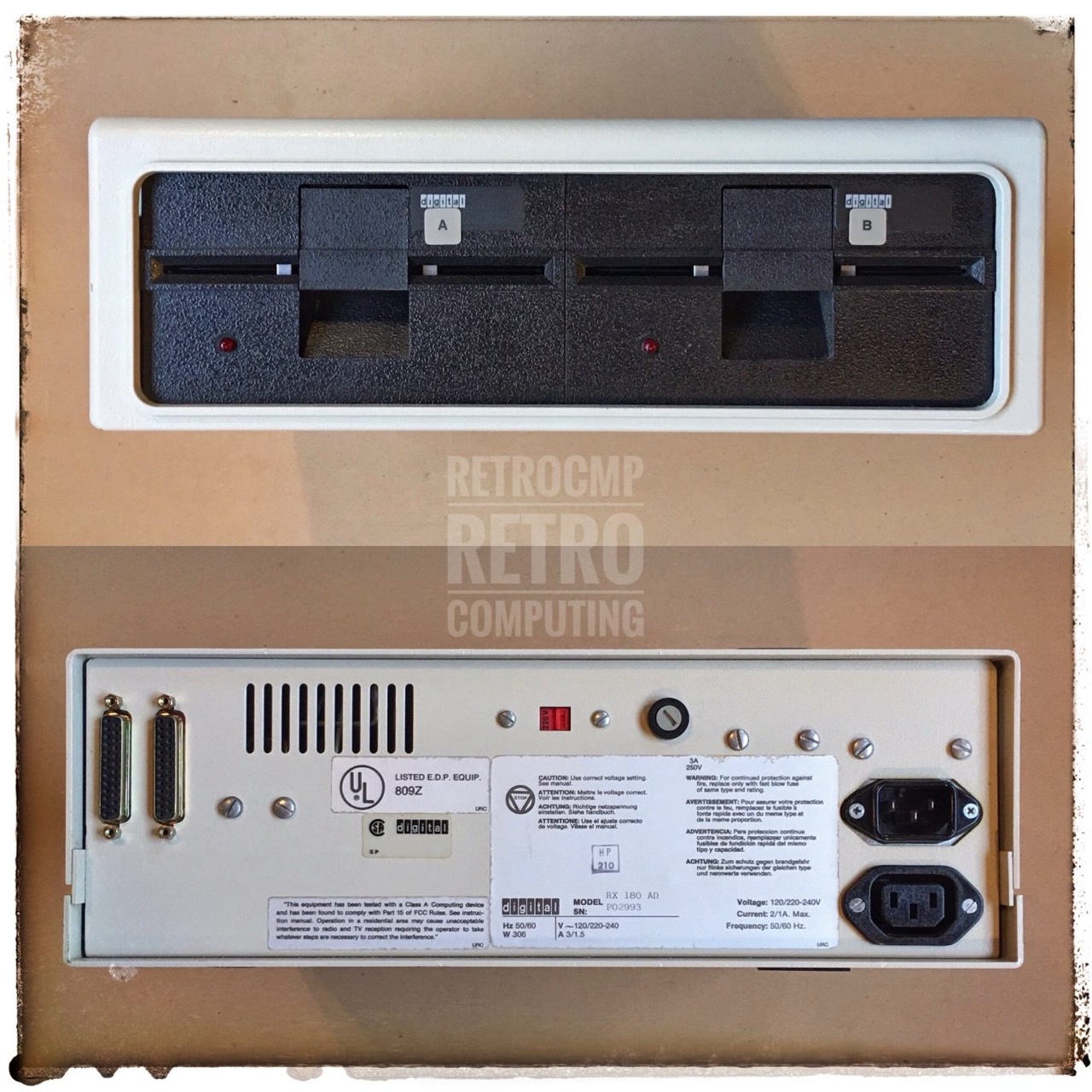
The RX180 is an extern floppy disk drive unit for the VT180 from the company Digital Equipment Corporation (DEC).
My drive was made in the early 80s because the Shugart 400L has only been around since 1982. The VT180 manual I have is from February 1983, so the drive is almost forty years old. Attention spoilers: And the RX180 still works well!
Without modifications, i.e. new Flopyy cable, the drive(s) cannot be connected to a DOS computer. DEC uses an extern DB25-pin sub-D connector in the RX180.
Internally, only a 26p cable is used. This is not a big issue, as only 13 of the usual 34 signals are actually used in the Shugart 400L. Of course, there are also 13 lines for grounding. Line 1 of the 26p cable is line 6 of the 34p cable, it's as simple as that!
Unfortunately, the 26p cable and the drive select(s) are designed for the DAISY-CHAIN system common in that era. The cable twister is missing, as required for a PC floppy controller. Therefore I have to crimp and bend a new cable myself.
27.12.2020: Disassembly and Cleaning
After removing the cover, I noticed that the inside of the RX-180 looks quite good. Yes, of course there is dust from long ago, but not that much.
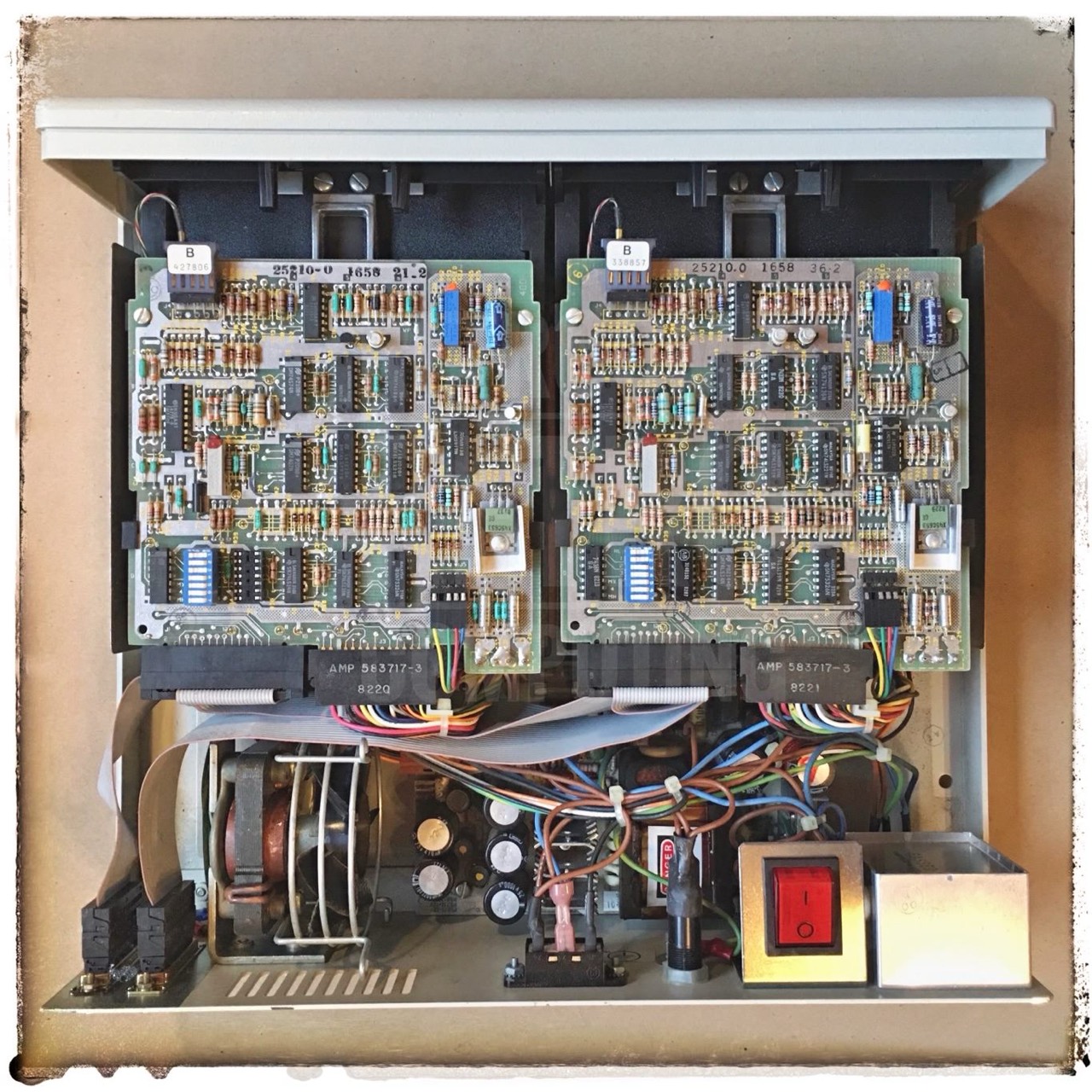
Two black non-slip rubber strips were attached to the underside of the case. Unfortunately, these were attached with an adhesive that dissolved the lacquer finish of the cabinet over time. It was only with great difficulty that I was able to remove these tough adhesive residues. To quote Ron Weasley: "Like troll booger glue!" Disgusting!
I rubbed off the glue residue with a dry cotton cloth. This was a bit tedious and sticky, but it worked. I didn't use any solvent because the adhesive residue would have turned into a greasy mush or smeary coating.
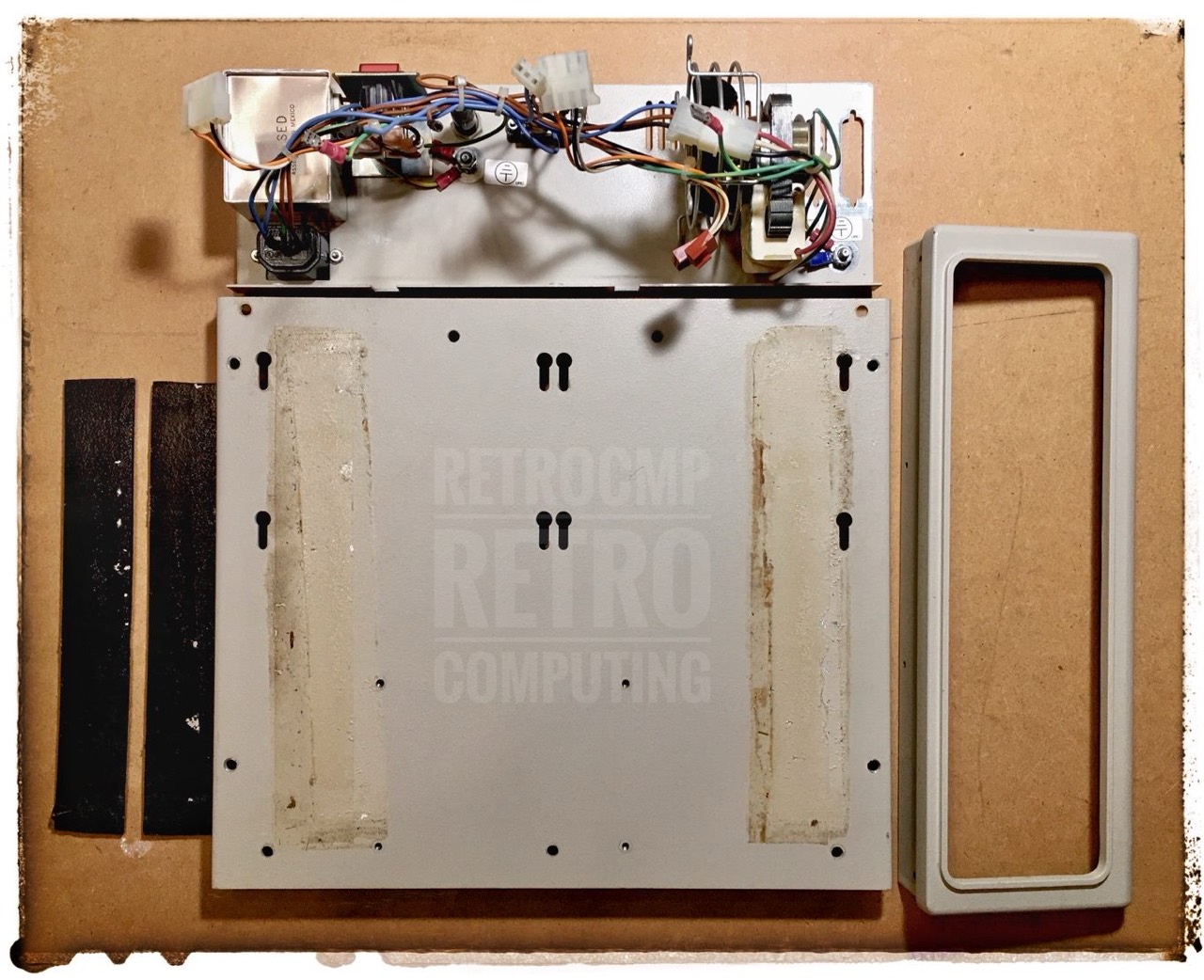
I then cleaned the housing parts properly with simple dishwashing detergent. Everything looks very clean again, but the dissolved areas are of course visible. Now then.
Both floppy drives were actually quite OK. Nothing that you couldn't fix with a fine brush and some compressed air.
27.12.2020: Is the AC Circuit ok?
DO NOT TOUCH ANY CABLES WHEN THE RED POWER SWITCH IS IN THE ON (I) POSITION. AN ELECTRIC SHOCK CAUSED BY ALTERNATING CURRENT (AC, 220V or 115V) CAN BE FATAL!
BERÜHREN SIE KEINE KABEL, WENN SICH DER ROTE NETZSCHALTER IN DER POSITION EIN (I) BEFINDET. EIN ELEKTRISCHER STROMSCHLAG, VERURSACHT DURCH WECHSELSTROM (AC, 220V oder 115V) KANN TÖDLICH SEIN!
!!! DANGER ZONE - GEFAHR !!!
After disassembly, I first checked the AC circuit. The fuse and the voltage changeover switch (230V/115V) are OK. The operation of the AC fan works with both 230V and 115V. The fan is surprisingly quiet but causes the empty housing to vibrate slightly.
By the way: I have a „Bronson++ TI800“ voltage converter. In continuous operation (longer than 30 min) it delivers a maximum power of 640 watts, enough to run up to three IBM AT 5170s with a US power supply.
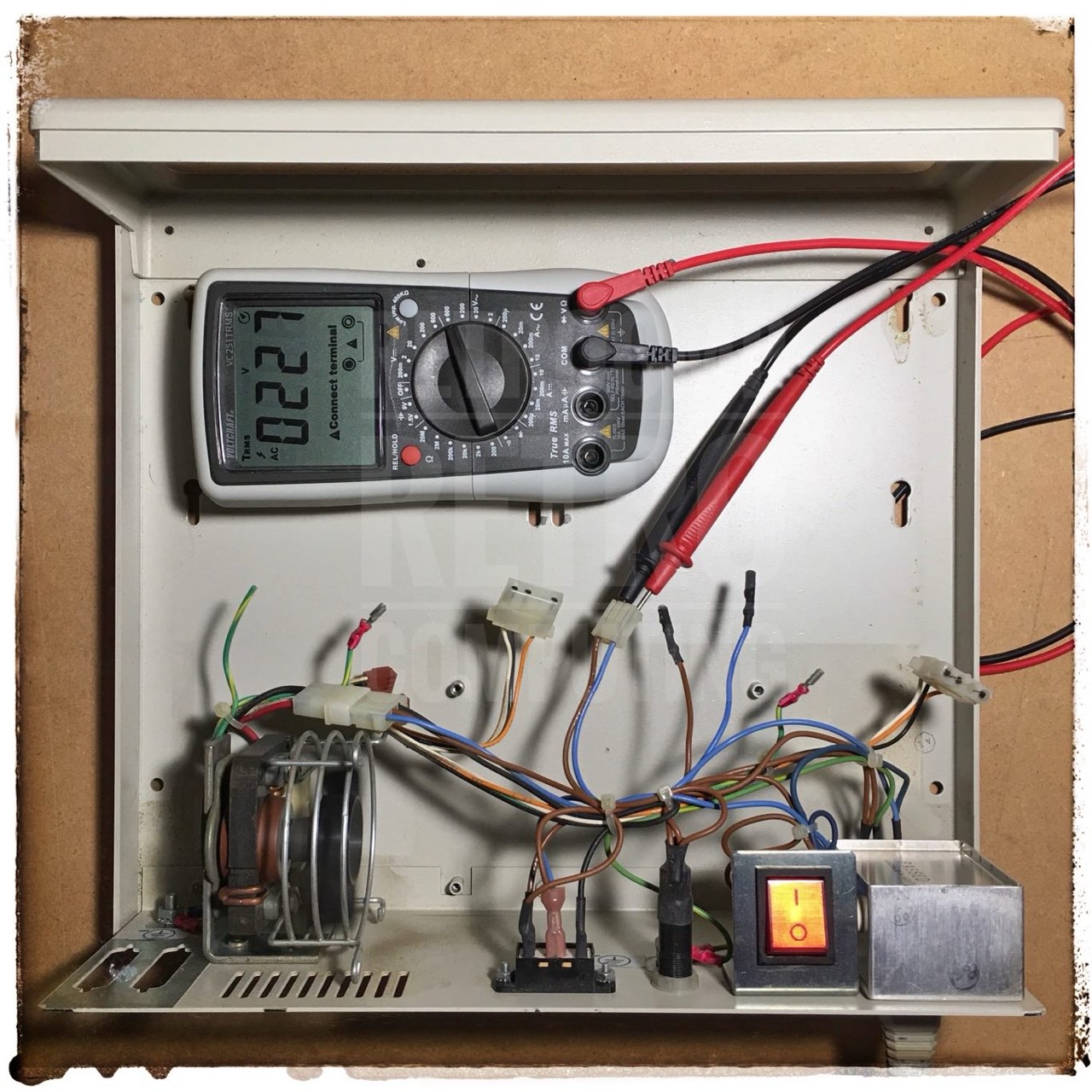
For the future, I'm not quite sure what I'll do with the AC fan. Maybe I will connect a modern DC fan (12V) to the internal power supply.
28.12.2020: Power Supply Unit - PSU
I EXPRESSLY WARN YOU NOT TO MAKE ANY CHANGES TO A POWER SUPPLY UNIT ON YOUR OWN. EVEN AFTER A POWER SUPPLY HAS BEEN SWITCHED OFF, THE CAPACITORS STILL CONTAIN SUFFICIENT VOLTAGE TO CAUSE YOU SERIOUS PHYSICAL HARM. ELECTRIC SHOCKS CAN BE FATAL.
ICH WARNE SIE AUSDRÜCKLICH DAVOR, EIGENMÄCHTIG ÄNDERUNGEN AN EINEM NETZTEIL VORZUNEHMEN. AUCH NACH DEM AUSSCHALTEN EINES NETZTEILS ENTHALTEN DIE KONDENSATOREN NOCH GENÜGEND SPANNUNG, UM IHNEN SCHWERE KÖRPERLICHE SCHÄDEN ZUZUFÜGEN. ELEKTRISCHE STROMSCHLÄGE KÖNNEN TÖDLICH SEIN.
!!! DANGER ZONE - GEFAHR !!!
The open power supply unit is from the well-known company Astec. Power supplies from Astec are also built into the Kaypro.
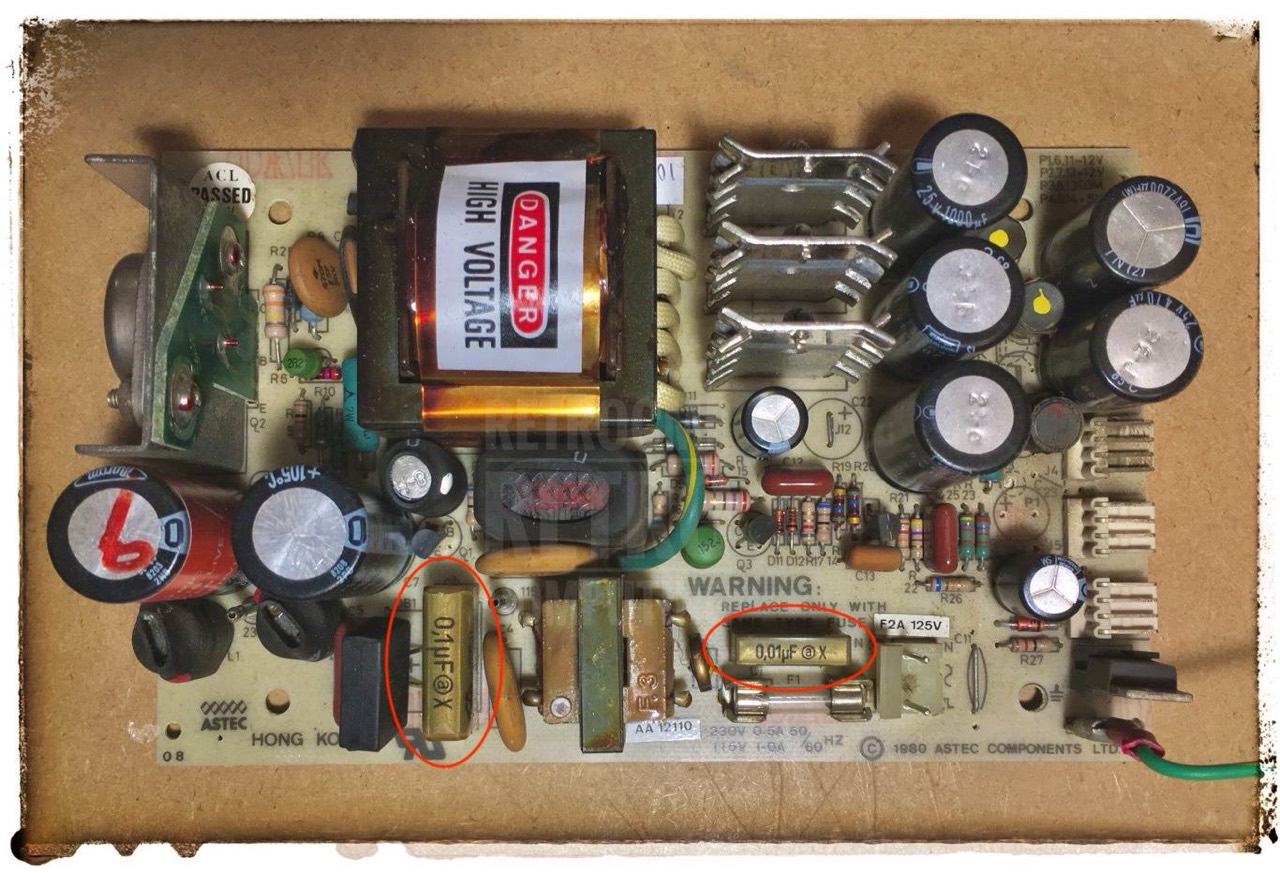
You can't see it in the picture, but when viewed from the side, the large RIFA interference suppression capacitor looks very bad. It has several deep cracks. It would certainly have blown out soon. The small RIFA doesn't look very good either.
This is the reason why old power supplies are not put into operation for the time being. The other capacitors look quite good for their age.
Update 29.12.2020: I have changed the two large 250V capacitors (left side). I still had two in reserve. Subsequent test: everything was perfect.
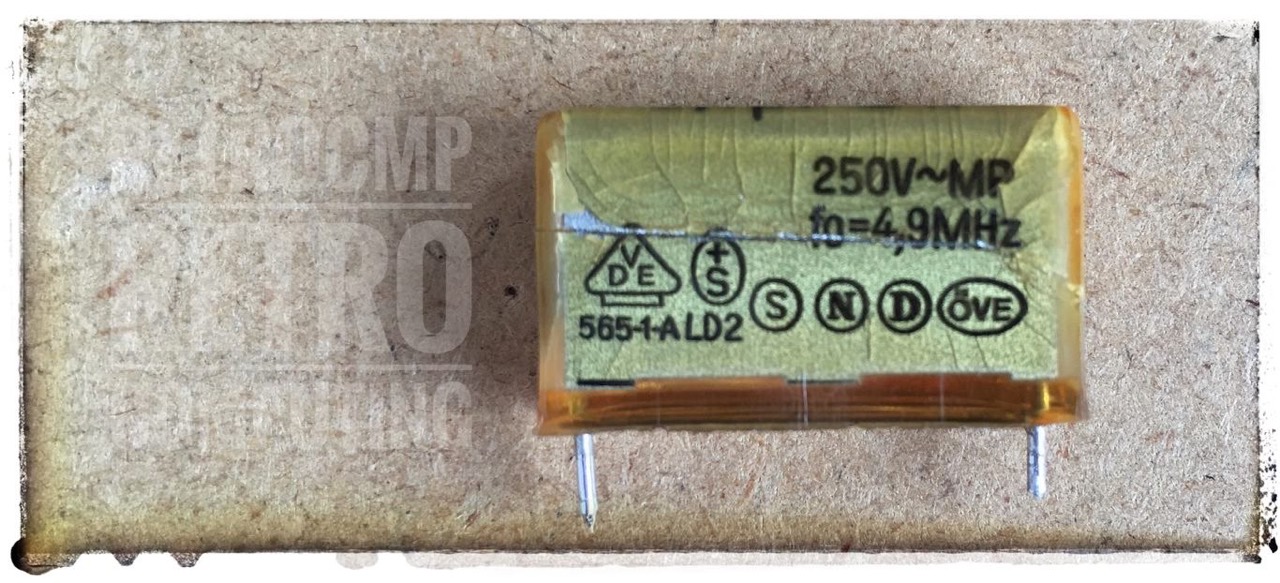
The two interference suppression capacitors have been replaced, three old solder joints have been re-soldered and the power supply unit has been cleaned of the dust of the last decades. The remaining capacitors look good on the outside.
For the first test, I connected an old discarded hard drive to the power supply. Never switch ON a power supply without a power consumer!
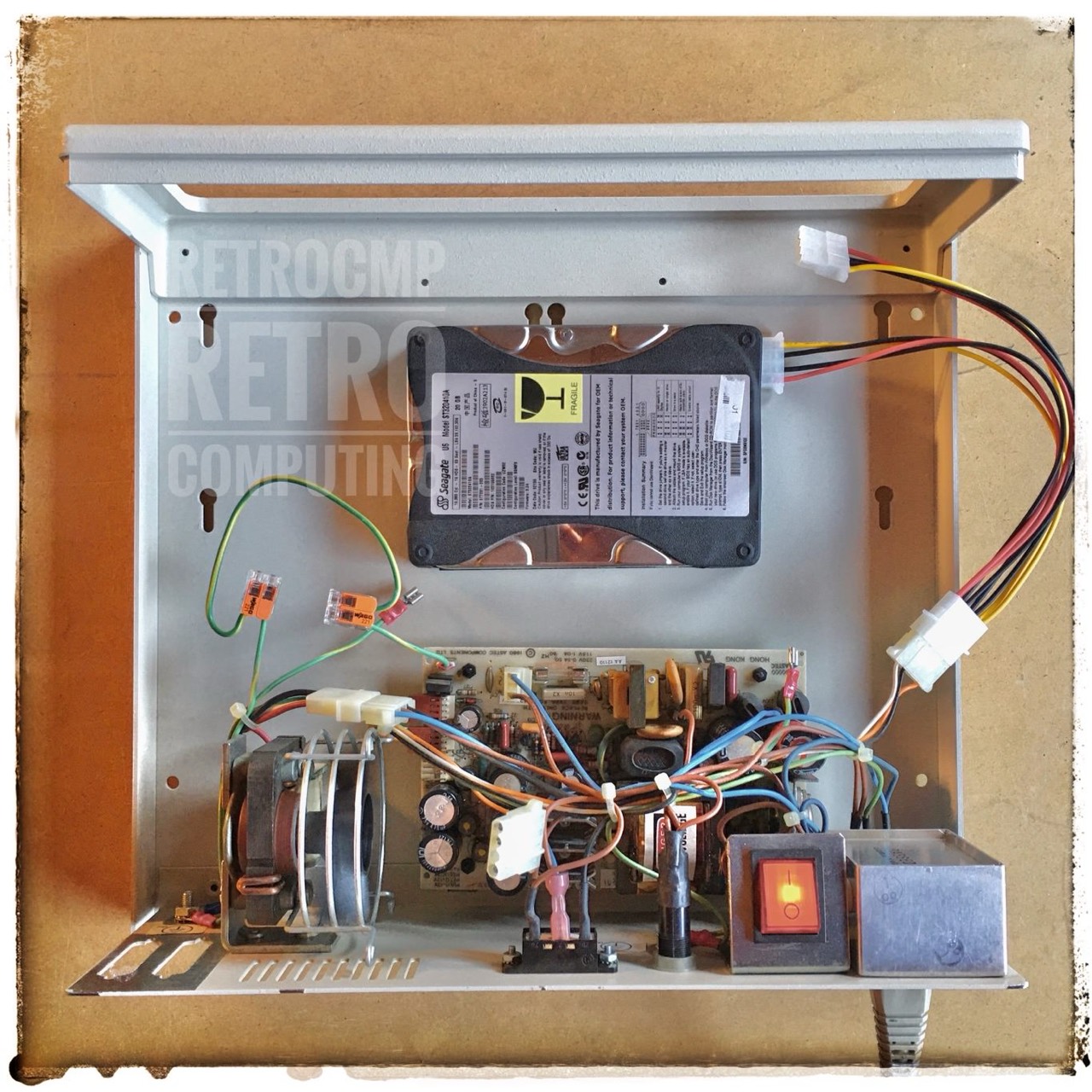
No bang, no smoke, the AC fan runs as usual and the hard drive spins too. For the continuous test, I also connected a 12 V DC fan. The voltage is continuously at 12.04 V.
29.12.2020: Are both FDD's ok?
Both floppy disk drives (FDD) are Shugart 400L. This is a single sided (SS) drive. In other words, it can store a maximum of 180 Kbytes (40 tracks, 9 cylinders, 512 bytes/cylinder; 184,320 bytes). The Shugart 400L can read and write in both FM and MFM.
During the external inspection I noticed that the bracket for the index sensor on drive B: had broken off. No problem. I carefully applied three small drops of hot glue one after the other and the sensor is fixed again.
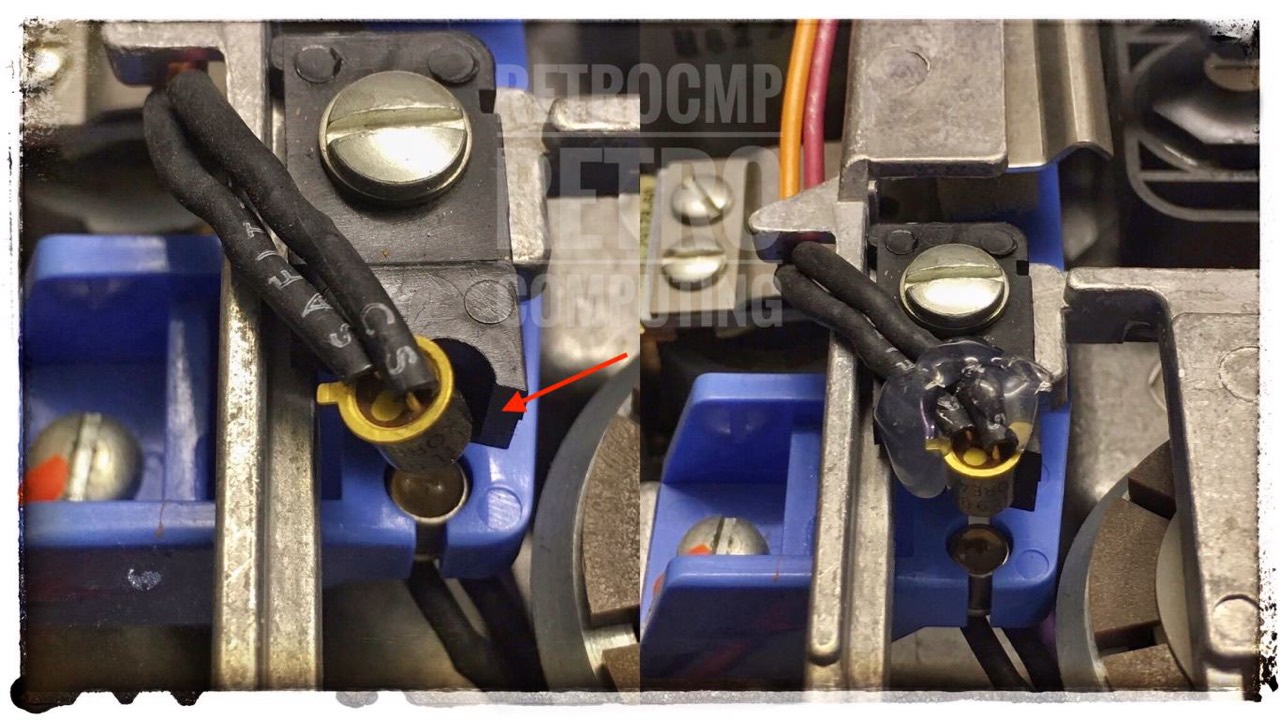
After everything was reassembled, I integrated both drives into my test station and tested them as „internal“ drives. I always use my IBM PC 5160 (256-640KB) open tower for this.

Make sure you set the termination resistor correctly. See red arrows above
The programmable shunt: HEAD LOAD = ON; DS2 = ON
The settings for connection to a standard PC controller are shown below. In the original, drive A is coded 1-1-0-0-0-0 and drive B is coded 1-0-1-0-0-0-0. Under DOS, the „second“ drive is almost always coded. Depending on the position - in front of the cable twister or behind it - the assignment is made as A (behind) and B (in front).
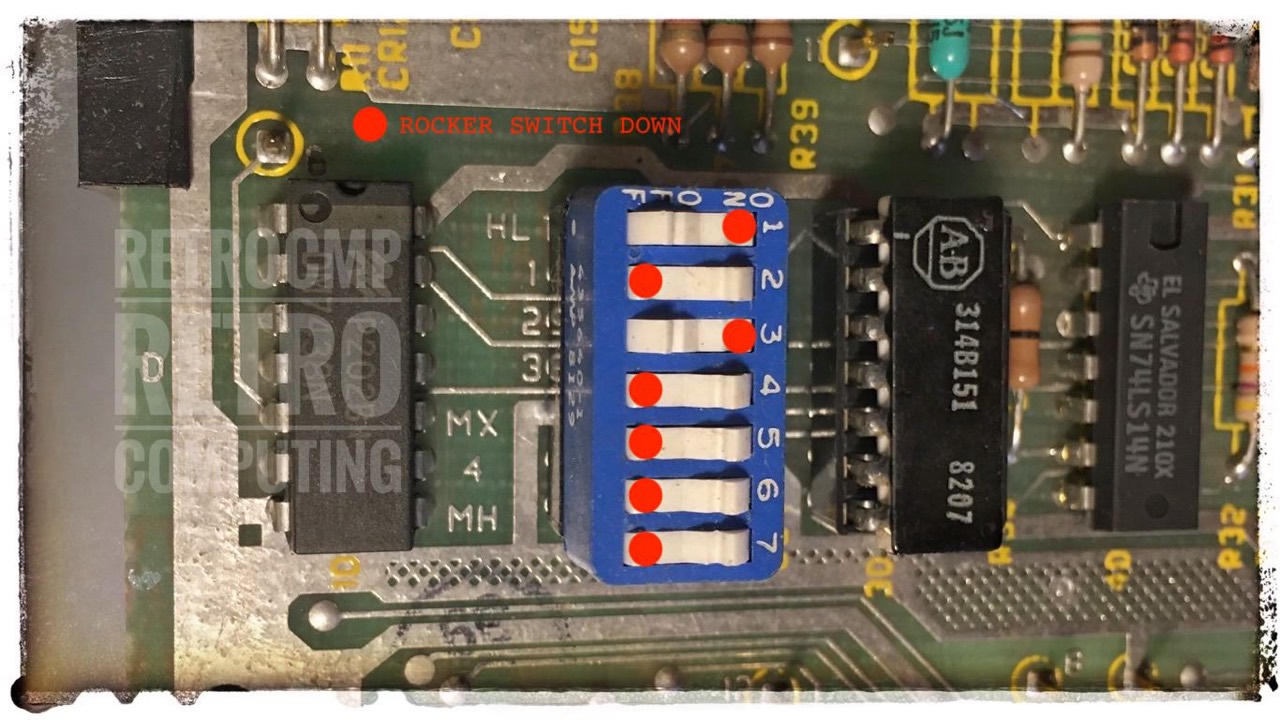
There is nothing else to report. Both drives still work after almost 40 years. Of course, they are no longer suitable for continuous operation.
To complete my series of tests, I connected both Shugart 400Ls as drives C and D via the „external“ floppy controller interface (DB37) of my IBM PC 5150 and the driver DRIVER.SYS. There are no problems here either, although the original DEC B drive does cause a little trouble. But this is due to the age of the drive!
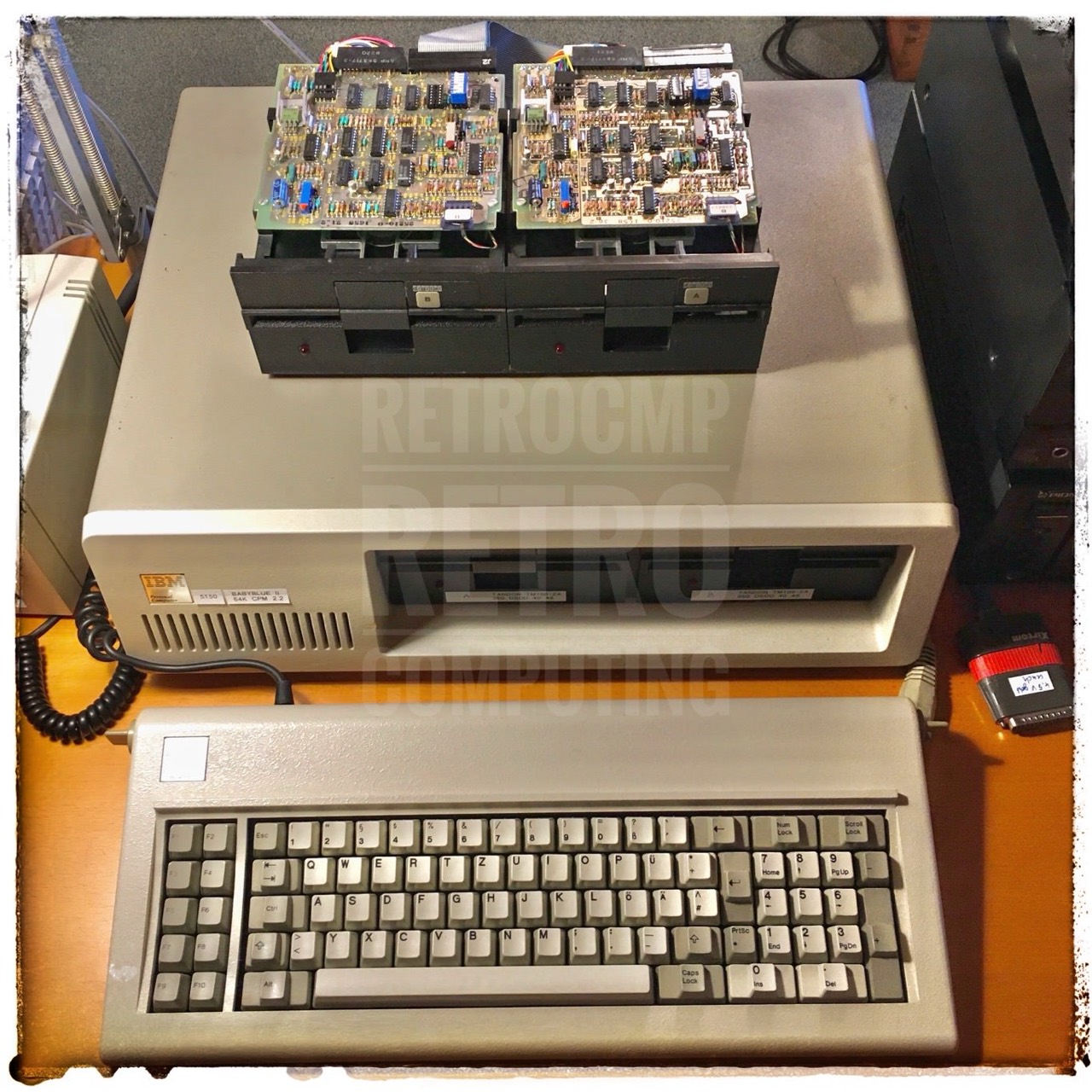
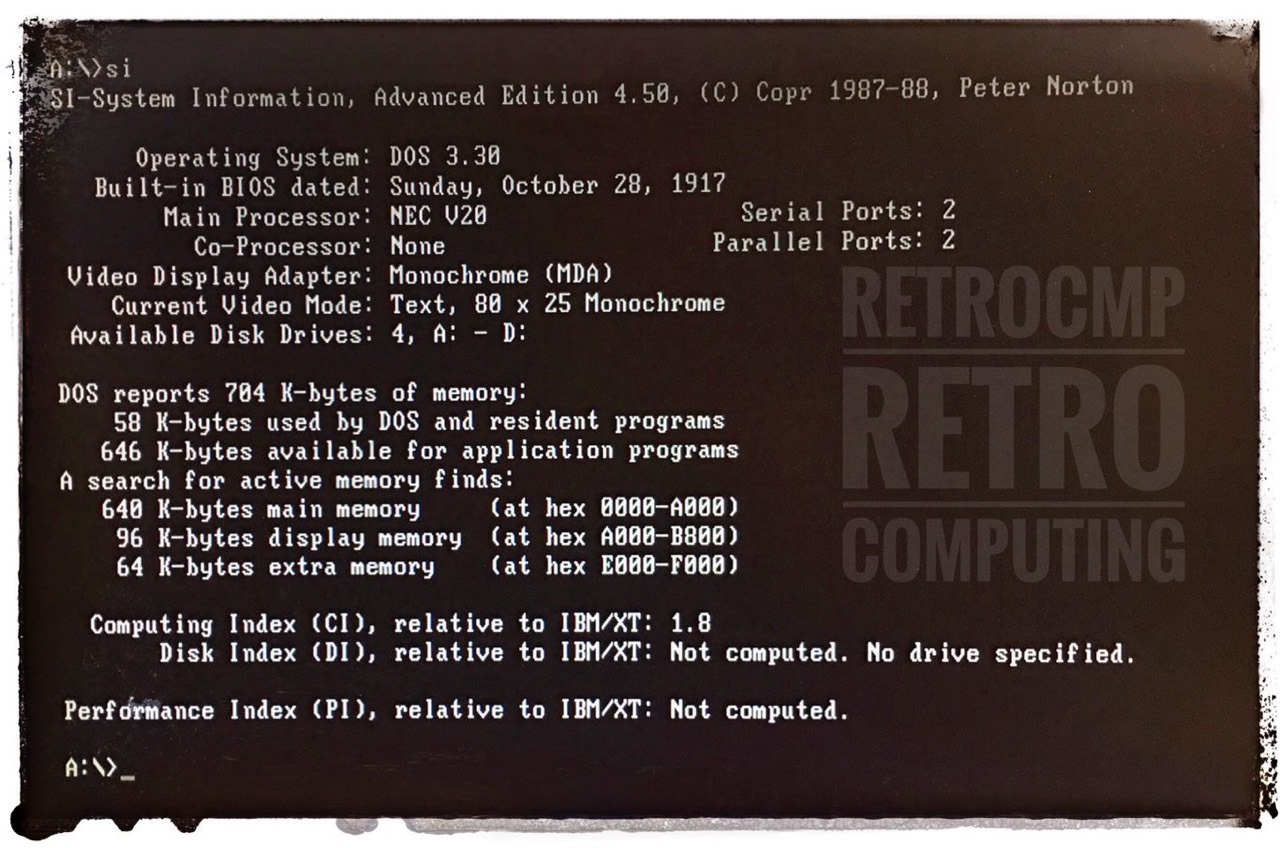
Update 05.01.2021:
-----
The last few days I've been testing both Shugart 400Ls on and off as external drives on my IBM 5150: Format them, copy a few files and finally check them with Norton DiskTest (DT). I noticed that everything works perfectly at first. However, if I remove the corresponding diskette briefly and immediately insert it again in the same drive, then the error message often appears that sectors cannot be found/read.
Final assessment: Yes, the two Shugart 400L's work, but the ravages of time have taken their toll. Unfortunately, regular use of these two drives is no longer possible.
-----
Update 07.01.2021:
-----
The error is in the steprate!
If you really want to use old floppy drives, such as the Shugart 400 (~1978) or 400L (~1981), then you cannot do so easily! Why? The Shugart 400 has a track to track steprate of 40 ms, the 400L of 20 ms! Even the TEAC FD-55A or B only have a steprate of 6 ms, which is 3 to 6 times faster.
Even in my IBM PC 5150 (see Update 05.01.2021) with the original IBM floppy controller I kept getting read and write errors (sector could not be read ...). Referring to the "5-1/4" Disk Drive Adapter" manual from IBM, this controller works with a constant steprate of 6 ms. This is too FAST!
I have tested again my two Shugart 400L in my IBM XT 5160 with a CompatiCard IV, here I can explicitly specify the steprate. And lo and behold, with a value of 20 ms, both Shugart 400L suddenly work perfectly!
Testing procedure/programs:
- FORMAT A: /1 or CCFORMAT A: /180
- FORMAT B: /1 or CCFORMAT B: /180
- -----
- COPY (150K of text files to A:)
- COPY (150K of text files to B:)
- -----
- DT A: (Norton Disk Test)
- DT B: (Norton Disk Test)
- -----
- IMD (ImageDisk: A:, Alignment, RPM)
- IMD (ImageDisk: B:, Alignment, RPM)
- -----
- Swap diskettes with each other.
- -----
- DT A: (Norton Disk Test)
- DT B: (Norton Disk Test)
- -----
- IMD (ImageDisk: A:, Alignment, RPM)
- IMD (ImageDisk: B:, Alignment, RPM)
Result: There has not been a single reading error or the like. Both drives work absolutely reliably. Even the rotation speed was close to 300 RPM. I only made minimal adjustments!
Update 15.02.2021:
-----
In the meantime, I have replaced the only large electrolytic capacitor (axial, 16V, 22uF, 8x18mm) in both drives. Surprisingly, the R/W errors are no longer present. I can now operate the dual drive on my IBM PC 5150 with the original IBM controller as 3rd and 4th external drive without any problems. Could this be due to the capacitor? However, I cannot answer this question because I lack the knowledge to do so!
Basically, the problem with the large step rate is a real problem. It is not without reason that you can explicitly set the step rate with the CompatiCard driver.
-----
31.12.2020: Changing the PSU Capacitors
The ordered capacitors arrived today (from Mouser). It took about 30 minutes to desolder the old ones and solder in the new ones. Afterwards a test; everything was fine.
06.01.2021: Assembling new Cables

34 line cable with twist to DB25 connector; DB25 connector with 26p cable to DB37 connector. Actually quite simple, isn't it?
But beware. The 26p cable or the DB25 connector only work because it is a one-sided drive, see figure: HEAD SELECT! A single-sided drive needs no HEAD SELECT.
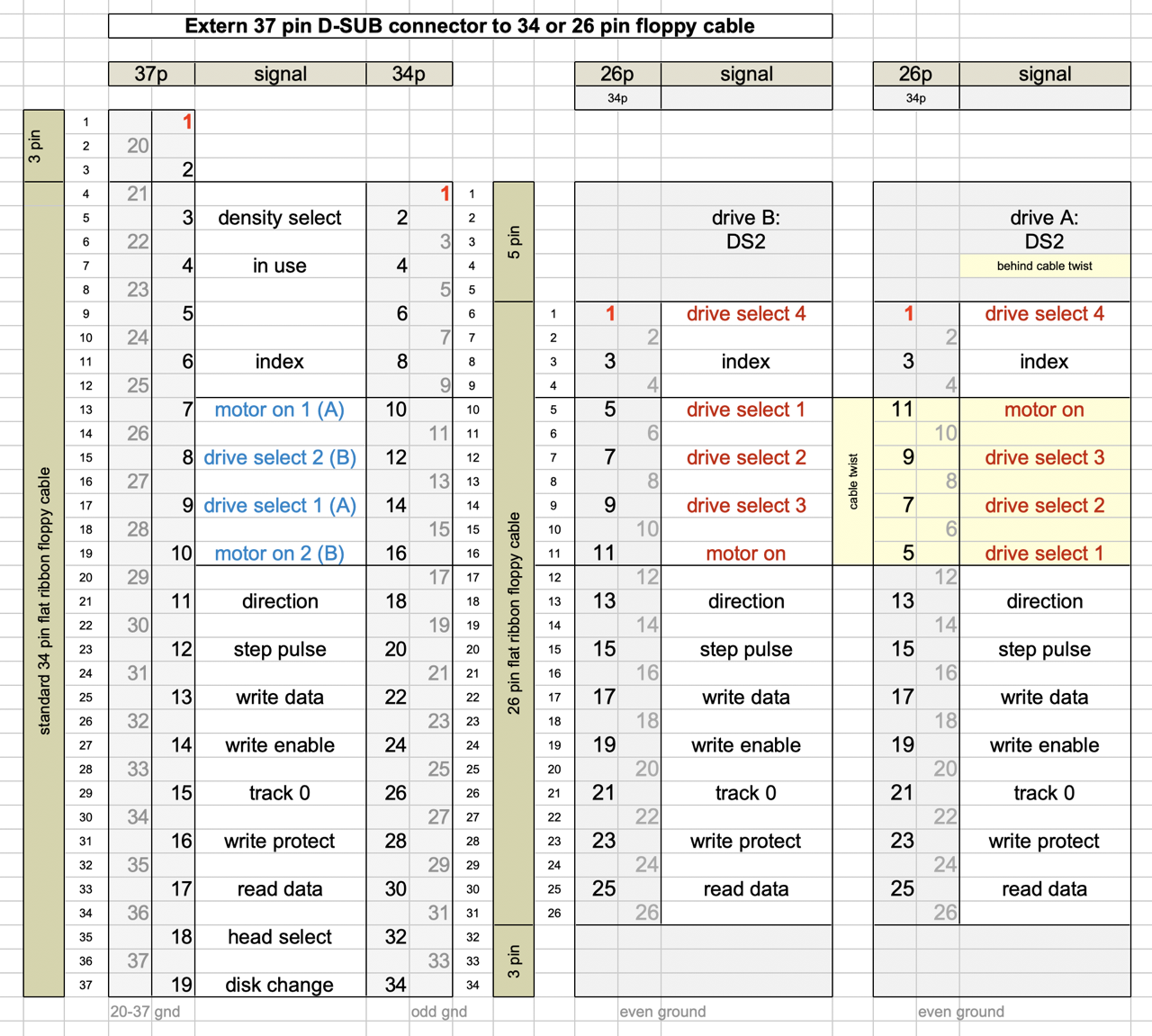
15.02.2021: Finished
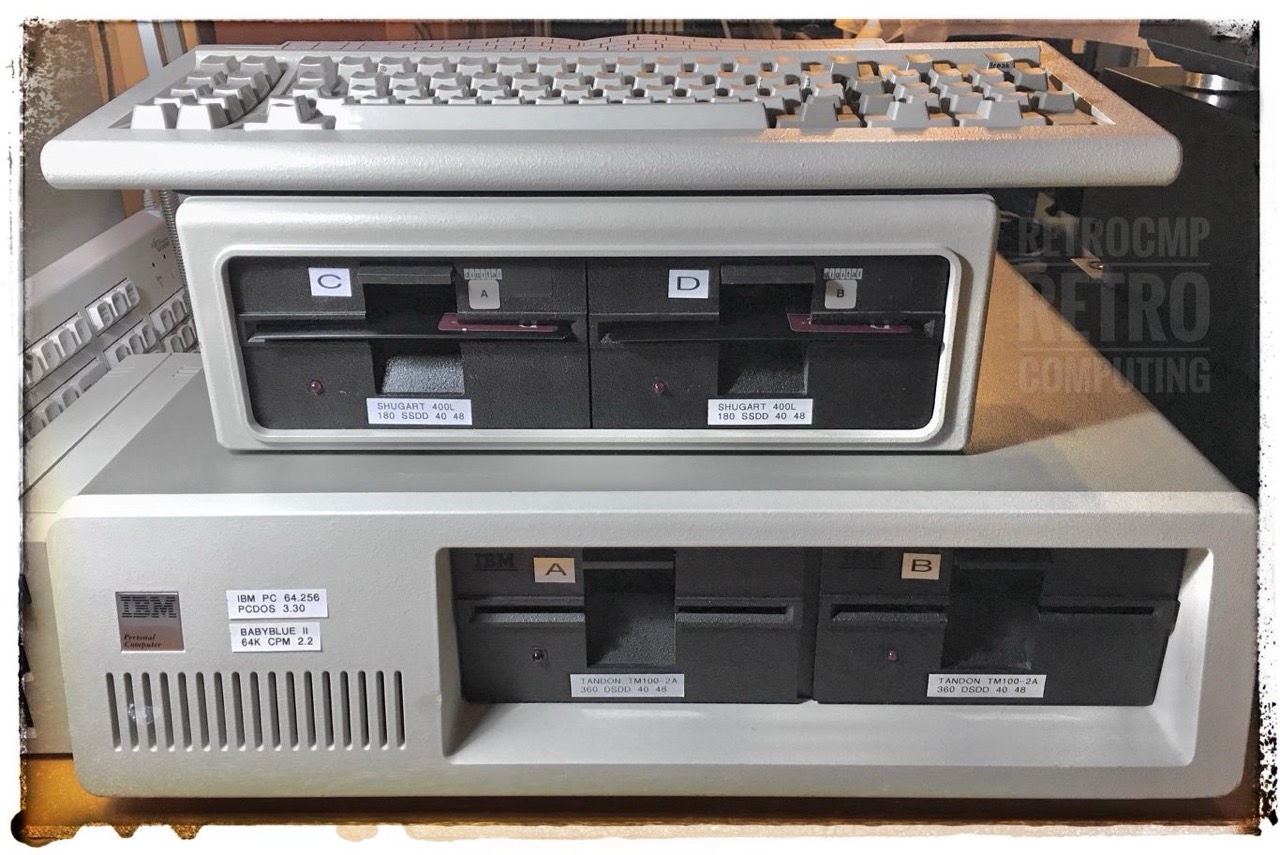
And here the RX-180 (2x Shugart SA 400L) as external drives C: and D: on my IBM PC 5150.
Other Usage
N* Horizon - MDC-A4 - SSSD
When do you ever need four floppy disk drives and then only single-sided? Therefore, the above set-up was initially a test on an old controller in an IBM PC 5150.
This floppy disk station had been standing around for more than two years without any real application. With my North Star Horizon and the installation of the MDC-A4 FM diskette controller (single-sided, single-density) I now have a use for it.
Here I can use this slow double floppy disk drive perfectly, because I have removed the two internal - defective - N* Horizon drives and have not replaced them.